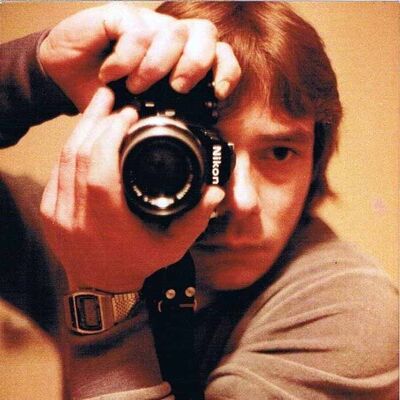I read this recently and it made me think
Nov 17, 2014 16:02:08 #
DrWilk wrote:
Sometimes B&W is needed to create a mood that would not otherwise be as observable. And sometimes B&W reduces the distractions that colorization may impose.
I agree with you. A pen and ink sketch is no less art than an oil painting. A string trio is no less art than a symphony. Black and white photography is a song sung a cappella.
Nov 17, 2014 16:09:02 #
Throughout the history of art, painters have worked in B&W, and other monochromes- in their etchings, engravings, lithographs and drawings---and paintings. Check out Picasso's Guernica. In photography, B&W is neither art nor trash. It's B&W, and is either.
Bob
Bob
Nov 17, 2014 16:09:22 #
WOW!Great analogies! I must remember them. Thanks for sharing.
jointerjohn wrote:
I agree with you. A pen and ink sketch is no less art than an oil painting. A string trio is no less art than a symphony. Black and white photography is a song sung a cappella.
Nov 17, 2014 16:10:53 #
kejoed wrote:
"Is black and white a gimmick? Given that hum... (show quote)
No to initial question; though, true, B&W is an abstraction since we do see in color.
Yes, you are reading too much (re-written history of art or marketing or what ever).
I take many shots intentionally to be converted to B&W. Just like I did with B&W film, I'll "see" the image as B&W. Different images work in B&W than Color.
But I'll agree there are people who try to salvage a bad shot by making it B&W. That seldom really works. I happened on to one of my own because the lighting gave an image with such low color saturation that I did just take the bit of color out and go B&W. It was a very specific situation (sun angle, back lighting, shadows, something) that I am not even sure of because I shot scores of other images similar to it and they had much more color.
I had a frustrating assignment for a night time portrait that was done under mixed lighting (color temperatures). I could not adjust to make a reasonable skin tone after hours of playing on Ps CS6, so I converted it to B&W. Not my finest hour or image.
Nov 17, 2014 16:42:04 #
doduce wrote:
Look at the stunning work of Graham Smith, one of our Hogs, and you'll see art and beauty in B&W. To say because it's B&W he's just self-indulgent would be a true disservice to him and an injustice to his work.
He impresses me as well.
But he also uses color when it is more appropriate.
In his case it clearly is an artistic choice.
Nov 17, 2014 16:43:55 #
kejoed wrote:
"Is black and white a gimmick? Given that hum... (show quote)
Black and white was the original photographic image. Learning to shoot b&w and convey a story or emotion was/is an art form. And it was the only option for many years. Some images are more powerful in b&w, but they need to be shot and processed properly to convey that power. Not all b&w is good! But artists can work in charcoal or pastels. Is the charcoal drawing any less valid the the pastel? You can paint in oils with a brush or a palette knife. Or you can paint in watercolors. Is one of those art forms less valid than the others? Or, since you can just take a color photograph of the subject, are they all invalid now? If an image in b&w makes more of an impact than a color image, isn't that the point? Art is meant to make a statement - impact how you see or think about something. Anyone who can accomplish this is an artist, and any technique the artist uses is valid if it makes that statement or impact.
Nov 17, 2014 16:47:33 #
Agreed. Absolutely true!
lowkick wrote:
Black and white was the original photographic imag... (show quote)
Nov 17, 2014 16:55:58 #
PVR8 wrote:
WOW!Great analogies! I must remember them. Thanks for sharing.
Thank you. Many people report that they dream in black and white. While I can recall some of my dreams in vivid detail, I don't recall colors in them.
Nov 17, 2014 16:58:14 #
photoman022
Loc: Manchester CT USA
There will always be a place for B&W, even in digital photography! There are some subject I look at and know that they will make great black and white photos.
Nov 17, 2014 17:29:04 #
Nov 17, 2014 18:08:35 #
Shades of Gray... Made from a Color Photo image....


Nov 17, 2014 19:15:17 #
kejoed wrote:
"Is black and white a gimmick? Given that hum... (show quote)
I am very much an amateur photographer, so what I'm saying may not be especially relevant. But...when I think about photography, there are multiple reasons why folk take (or make) photographs, but mainly they are: 1) to document something that we are seeing, and 2) to create something that is of artistic value and is interesting and/or pleasing to look at. In the first instance, I think that nowadays we would want to replicate as best we can what we are seeing, and thus color makes most sense...except if we are documenting something for publication in a newspaper or journal that's printed in B/W. PP should likely be minimal aside from perhaps cropping out extraneous things, or adjusting exposure/shadows so that things can be more easily seen. In the second instance, if we are creating something of artistic value, I do not think there are any rules. Some may choose to do no PP, others may do extensive PP, change colors, convert to B/W, do anything...and any choice is equally valid.
Nov 17, 2014 22:31:28 #
rlscholl
Loc: California
Who among us believes the film noir movies of the late '40s and early '50s would have the same "feel" if filmed in the Technicolor of the day.
Nov 17, 2014 22:54:51 #
James R wrote:
Actually, I think your one of a few, so far, that "get it". It is hard to explain it in words. I would suggest to anyone who wants to begin to understand to go see an Ansel Adams print, not an image in a book, but an actual print, there's a huge difference. James, I know YOU know where I'm coming from with that. The beautiful gradation and wide tone range of the silver emulsion is about as lifelike as it is possible to do on a print. The fact that it is so lifelike, the brain senses color and nothing is missing to the viewer. It IS hard to "explain" how B&W can be more true to life then color, but in the realm of fine photography there are many examples of it. It has to be experienced to be understood. Our brains can, and do, a lot of adapting as it pertains to color. That holds true even in grey scale images. This is but one attribute of fine B&W photography.================================ br br I do not b... (show quote)
Color is another dimension entirely in comparison to line and form within an image. Most photographers work mostly in color yet, I think it safe to say, the average photographer understands a lot less about composition as it relates to color then he does about line and form. I learned that first hand when I first started to learn something about color composition. I realized I knew next to nothing about color as a compositional form. I myself left off film photography at a level where I was thinking either full tonal range B&W or compositional Color as I viewed subjects. As I return to photography and digital, I find myself compelled to resume where I left off. I love working in B&W and Color, but as separate mediums. They are two completely different ballgames and I love the fact that I no longer have the constraints using roll film always gave me.
An interesting offside about B&W I remember reading about in some studies done some years back. Eye movements of random people viewing banks of assorted TV's were studied. It is interesting to note that once people settled in watching what was being played, a majority of people actually gravitated to viewing a B&W screen rather then color. An unexplained but interesting tidbit to mull over.
Nov 18, 2014 08:14:54 #
Blasthoff wrote:
The beautiful gradation and wide tone range of the silver emulsion is about as lifelike as it is possible to do on a print.
Ansel Adams is one of my heroes. I own several of his books and a video about his life, and have attended exhibits of his original work. But he worked a long time ago, and the world of technology has moved on.
The modern equivalent of a great silver halide print would be an Epson Ultrachrome print made on an x900 series printer using a top notch photo grade paper. With the right workflow on the front end, this inkjet technology can equal and easily surpass what was possible with B&W film in Ansel's day. The same technology can produce state of the art color.
A lot of folks, even in 2014, still have the perception that digital is somehow inferior to analog reproduction, when in fact, the opposite is true.
In the late 1950s, color prints became popular, and commanded more money than black-and-white, because the perception was that it was real, the process was new, and "better." Now, B&W often commands more, because it is difficult to do well and it is relatively rare.
If you want to reply, then register here. Registration is free and your account is created instantly, so you can post right away.









